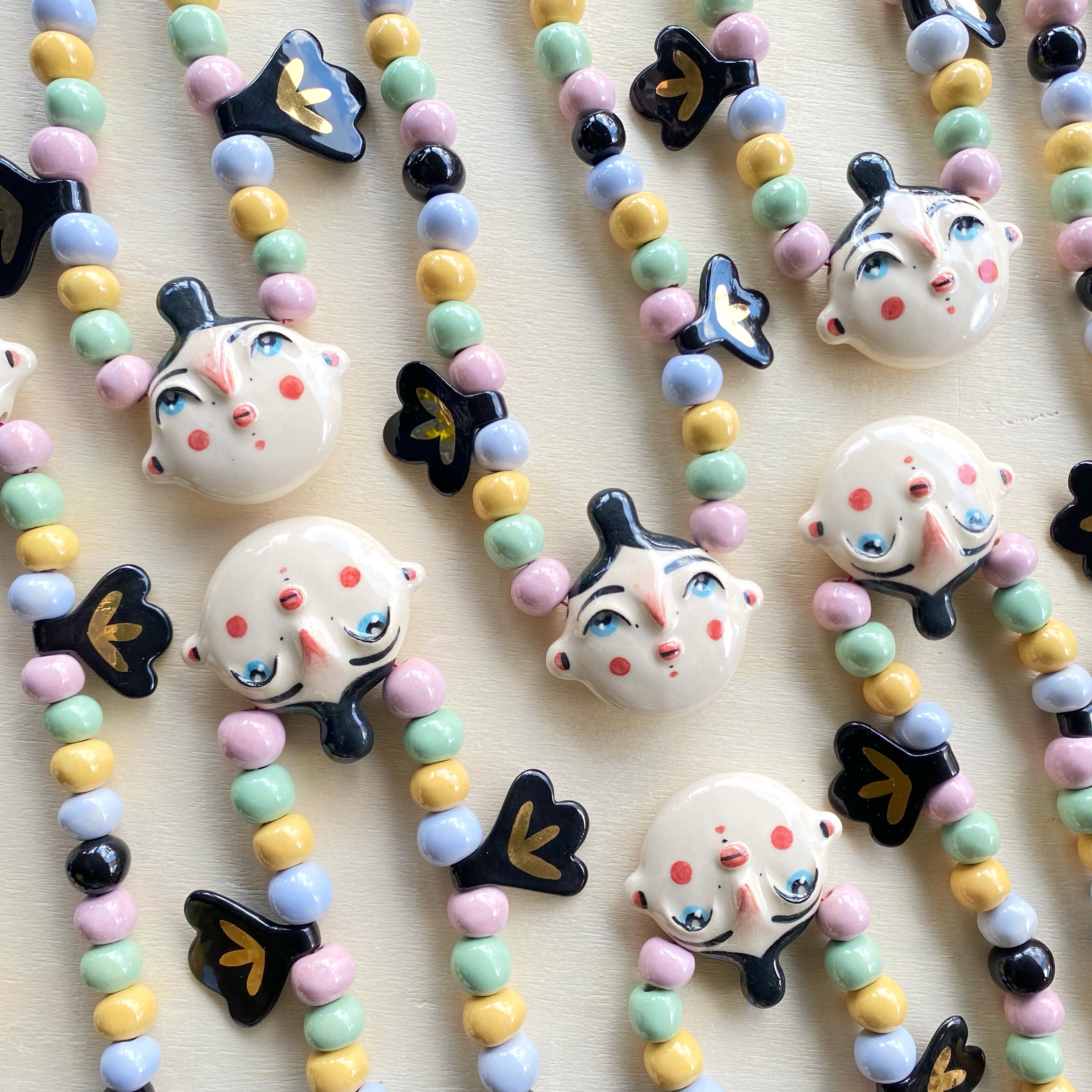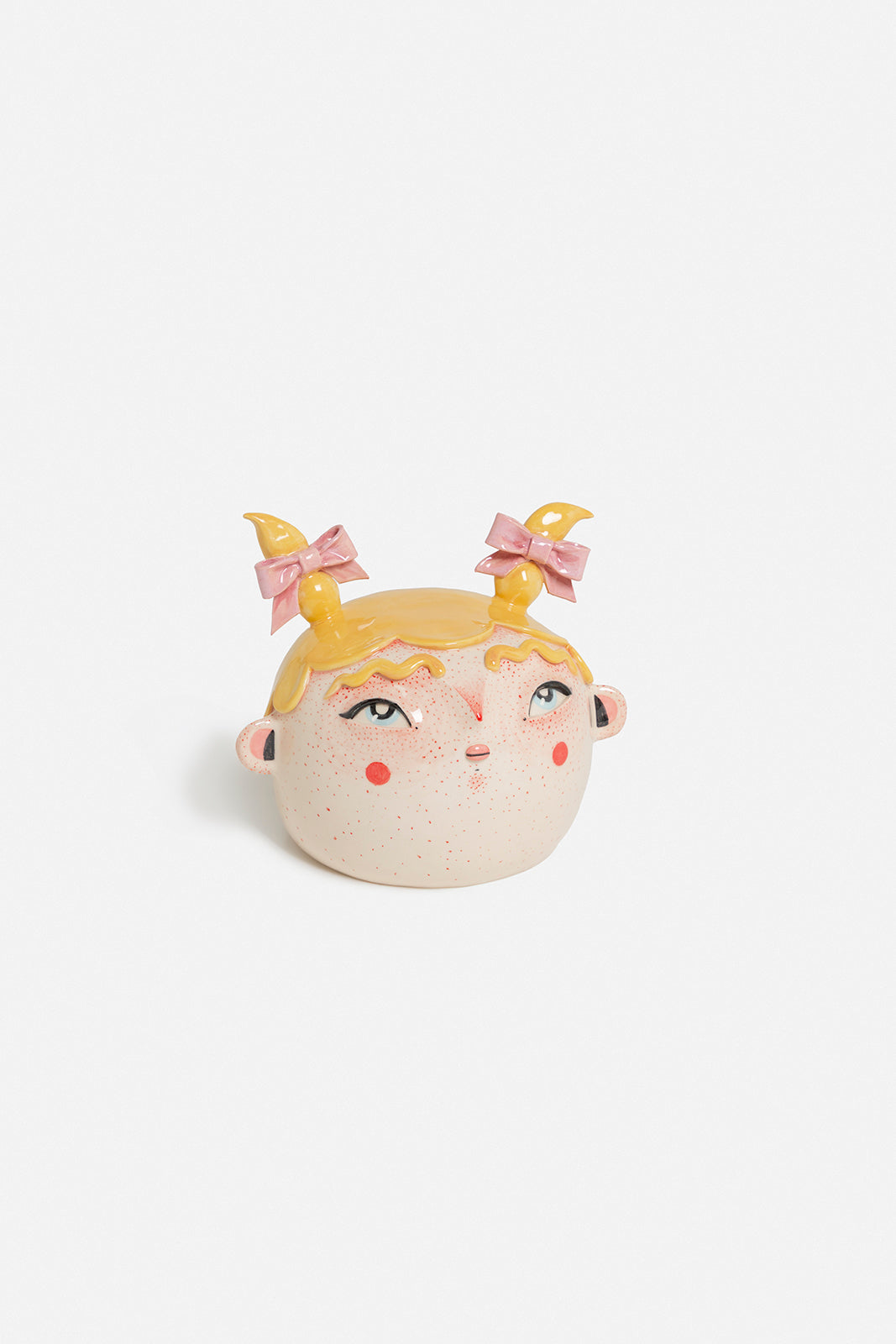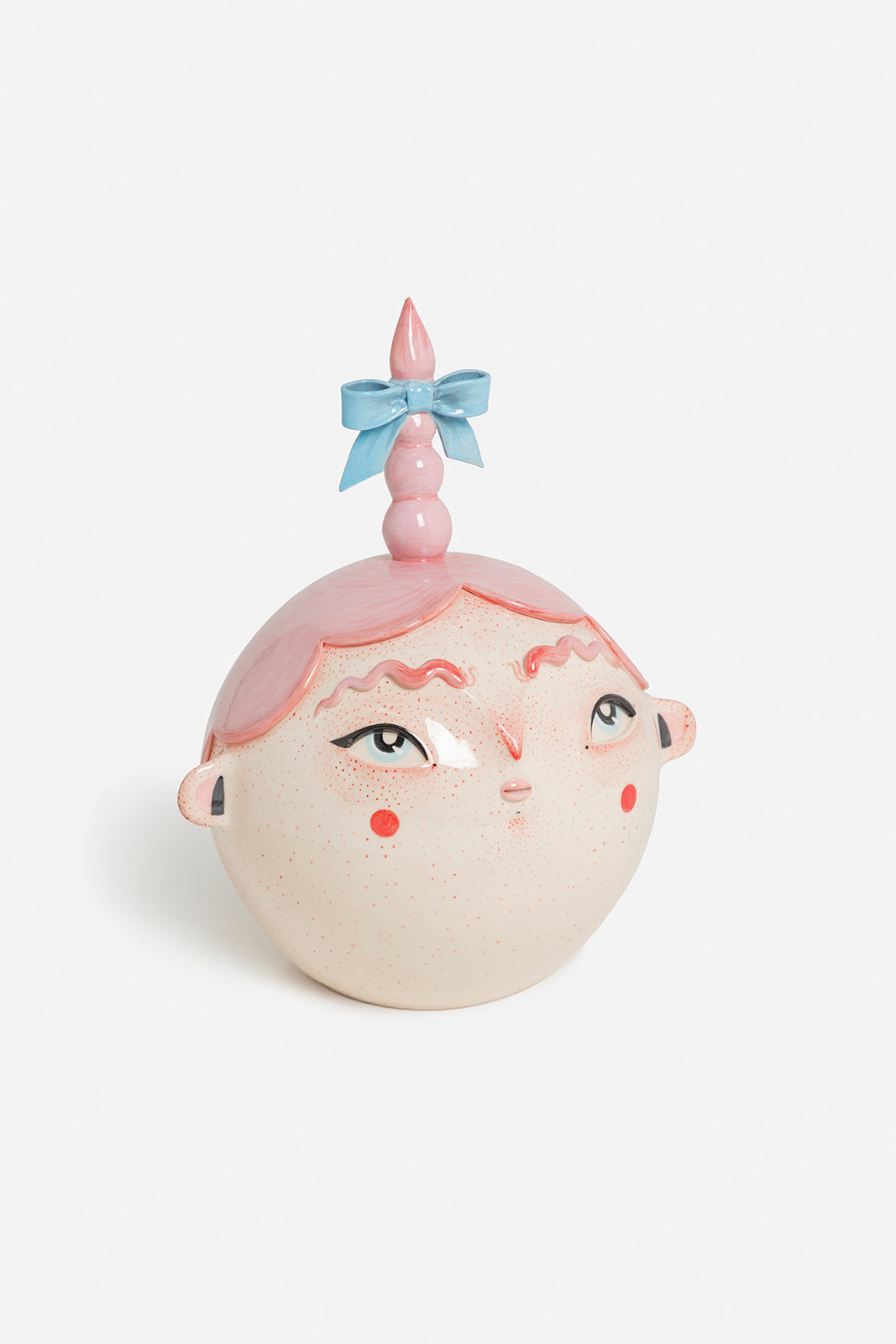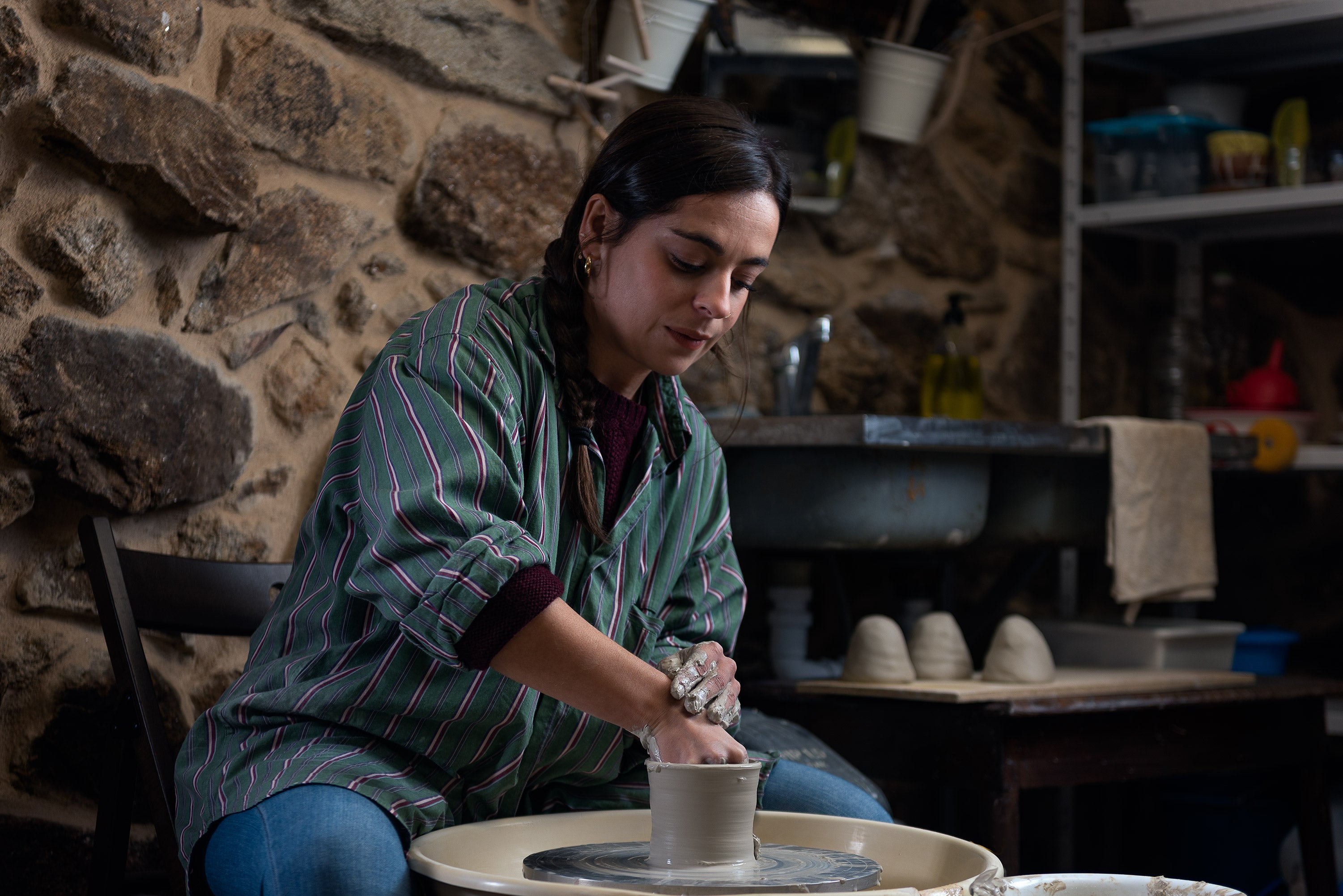
Abi Castillo (Vigo, Spain 1987) is a painter and illustrator. And a ceramist. It was with this last discipline, ceramics, that the Galician artist began to enjoy a different approach to her work that captivated her. Stepping away from flat surfaces allowed Abi to touch and shape her characters, bringing them to life from her particular naif universe.
- Can you describe yourself in five words?
- Constant, restless, curious, shy, and absent-minded.
- How did you start working with ceramics?
- My journey into the world of ceramics was a natural process. I've always painted, but I wanted to step away from paper and start bringing my ideas to life in three dimensions, to give form to all the characters and creatures that inhabit my mind.
I started in Emilia Guimeráns’ studio and later completed my training in Artistic Ceramics at EMAO in Vigo.
- Do your creations have a common thread?
- It’s very important for me to give my pieces a face. When I was little, they used to call me"Big Eyes,"a trait I inherited from my paternal grandmother, whom I barely knew. Carrying that legacy has always reminded me of where I come from and where I belong. It’s turned having eyes to look into into almost an obsession.
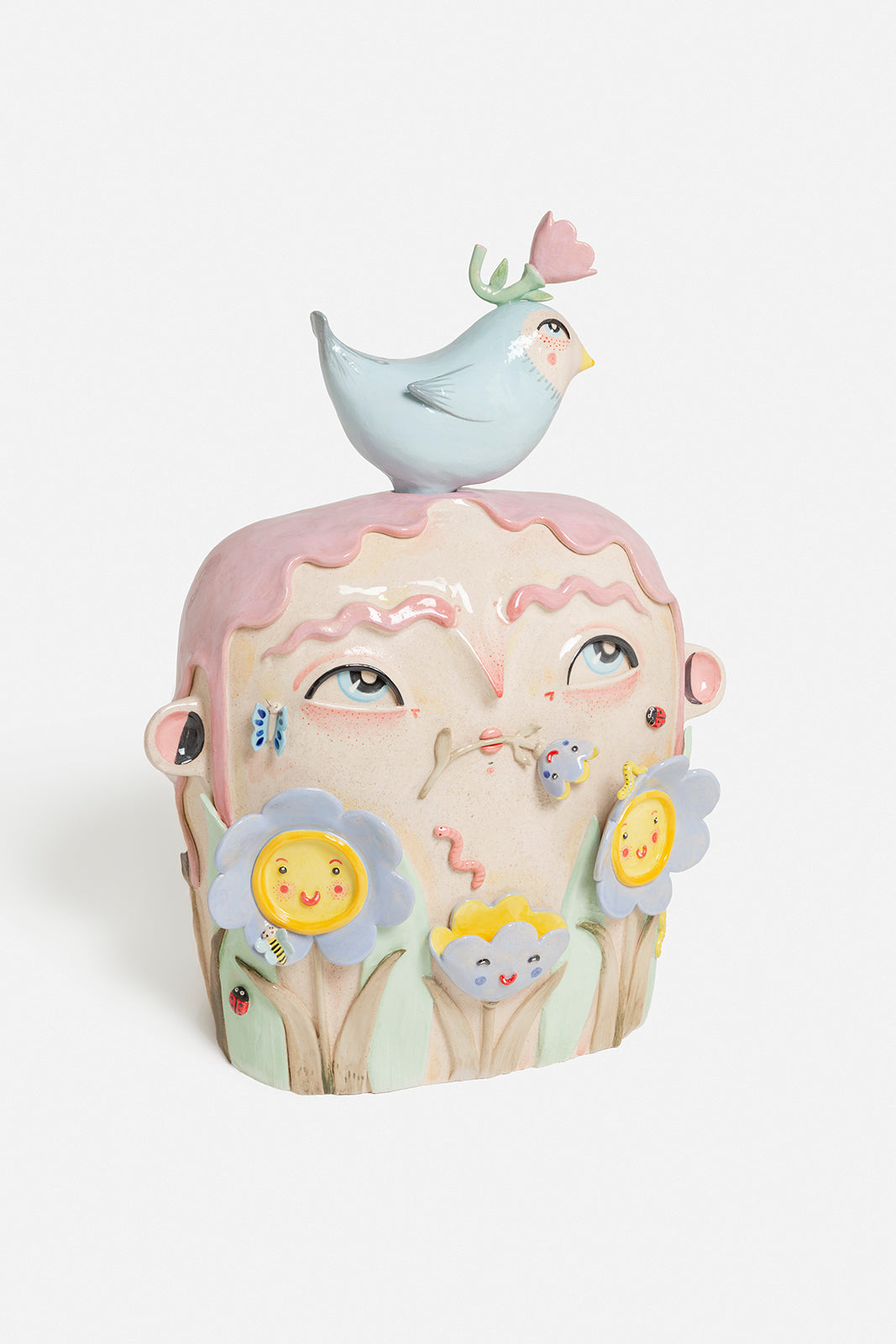
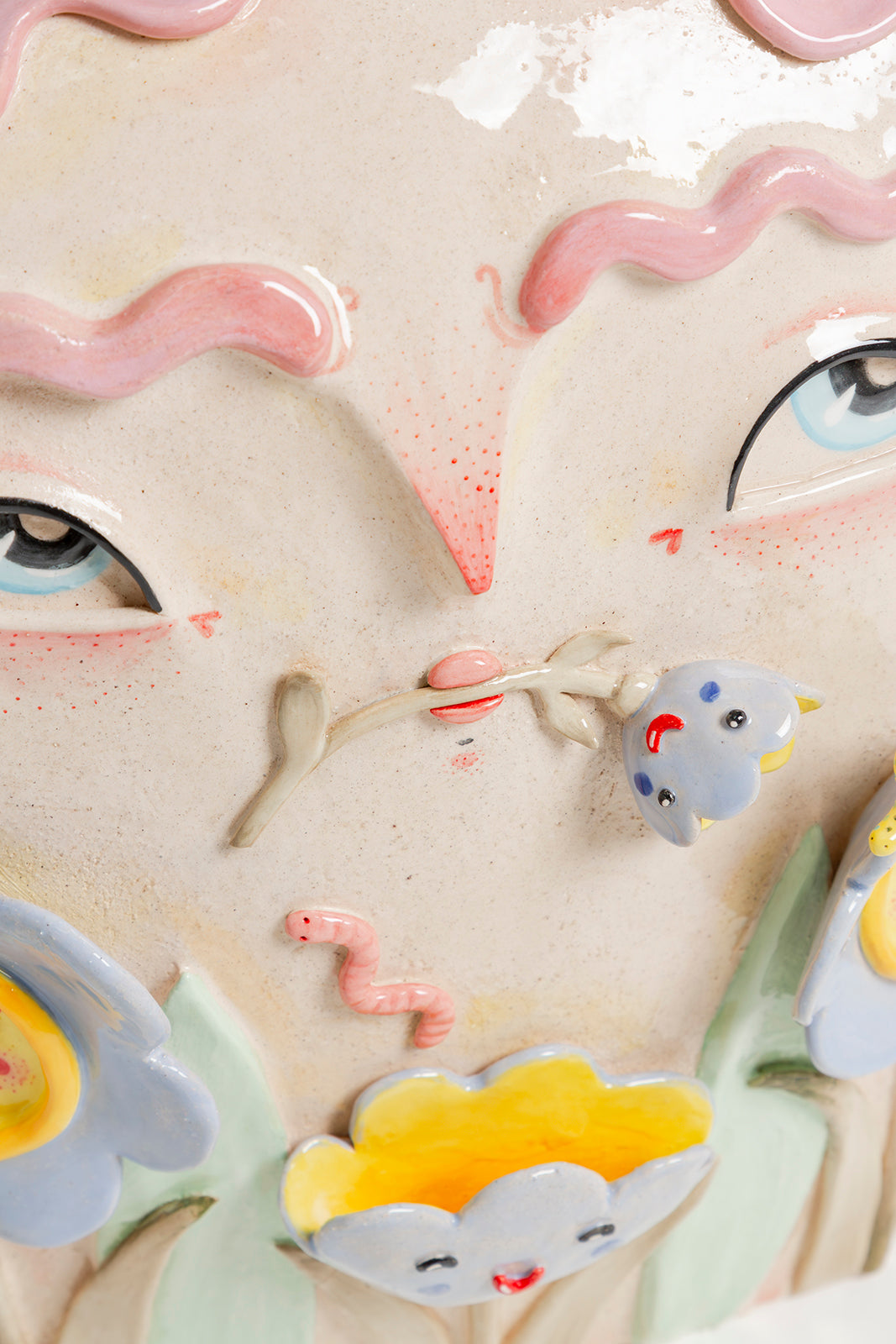
- Do you always plan the final result, or is there room for surprise?
- In ceramics, the element of surprise is always present—sometimes for the better and other times, not so much. It's hard to control every step of the process, and that’s part of the game. (There are plenty of memes about ceramists learning detachment because of all the pieces that don’t make it.)
When it comes to my creative process, that’s a different story. I usually work without sketches: I start with a base, made on a wheel or with coiling, depending on my mood that day, and then add elements as ideas come to me. Other times, I find working with sketches helpful because inspiration doesn’t always strike in the studio, and I don’t like to lose good ideas. I jot them down in my notebook and reproduce them later.
- Do you see connections with the Lowbrow art movement? Do you identify with it? Any points of divergence?
- I’ve always loved Lowbrow artists, and I’ve followed the work of Mark Ryden, Marion Peck, Kathie Olivas, Gary Baseman, and others. As a teenager, their work brought me closer to art in a way that felt less rigid—more playful, rebellious, and personal.
I believe the Lowbrow movement has democratized art by placing value not just on unique works but also on limited editions, toys, and other creations. It’s allowed collectors with different budgets to engage with art.
- What’s the number one rule of your craft?
- Patience, without a doubt. In this trade, as in most artisanal processes, if you’re not armed with patience, you’re lost. It’s a slow craft with lots of waiting. Building is slow; drying is even slower, and firing takes time too. From the moment you conceive a piece to when you see the final result, a lot of time passes—something the public doesn’t always realise.
We live in a fast-paced world, but ceramics requires respecting its natural pace. If you rush the drying process, cracks can form, ruining days of work.
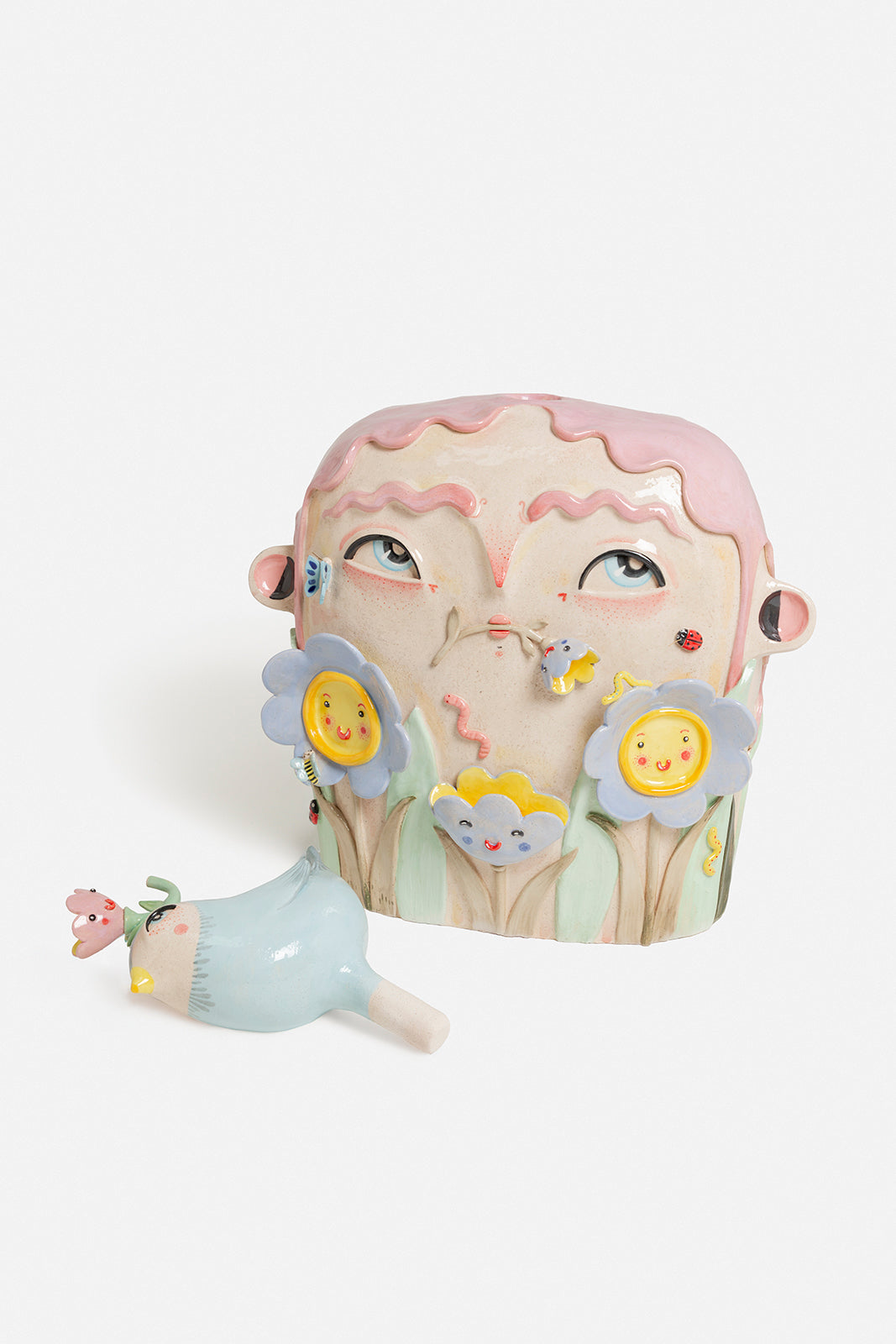
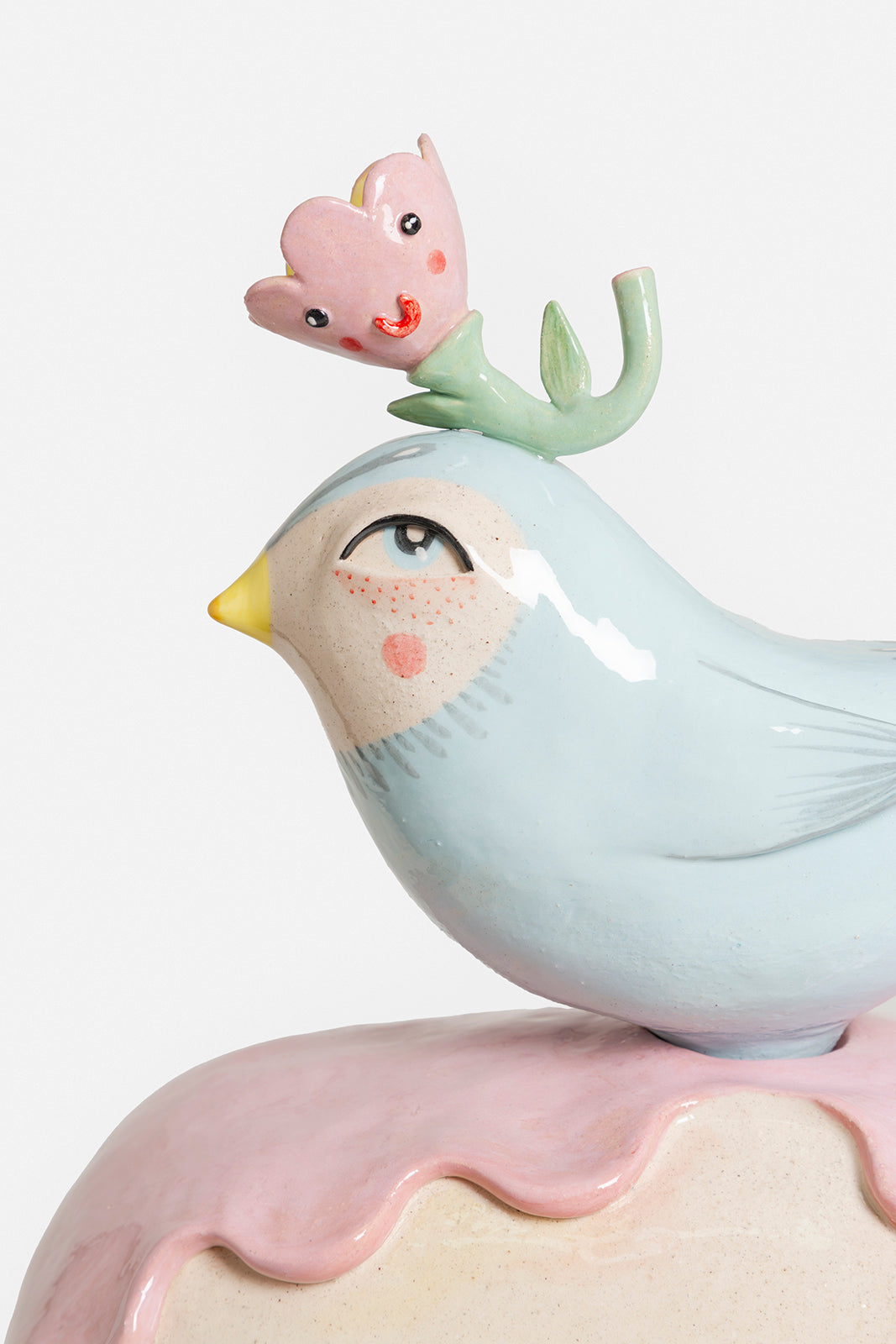
- What are your ideal workspace and schedule?
- I love my work and thoroughly enjoy my time in the studio. I think I could spend all day between painting and ceramics without any problem.
I’ve always been more active and creative at night, but since becoming a mother, I’ve had to adjust my schedule to avoid turning into a zombie—although that still happens sometimes because uninterrupted sleep isn’t guaranteed! Now, I mostly work during the day, especially in the mornings.
As for my workspace, I like to tidy up and leave it ready so I can pick up right where I left off the next day. Keeping things organised helps me concentrate.
- Do you listen to music while you work?
- I almost always listen to music, although some days I prefer complete silence.
- If you had to choose a favourite piece of yours, which would it be?
- It’s hard to pick just one, but right now, I think I’d choose a small head I made for my daughter during a Raku firing workshop last year. The marks left by that firing process make every piece unique, and this one was very special to me.
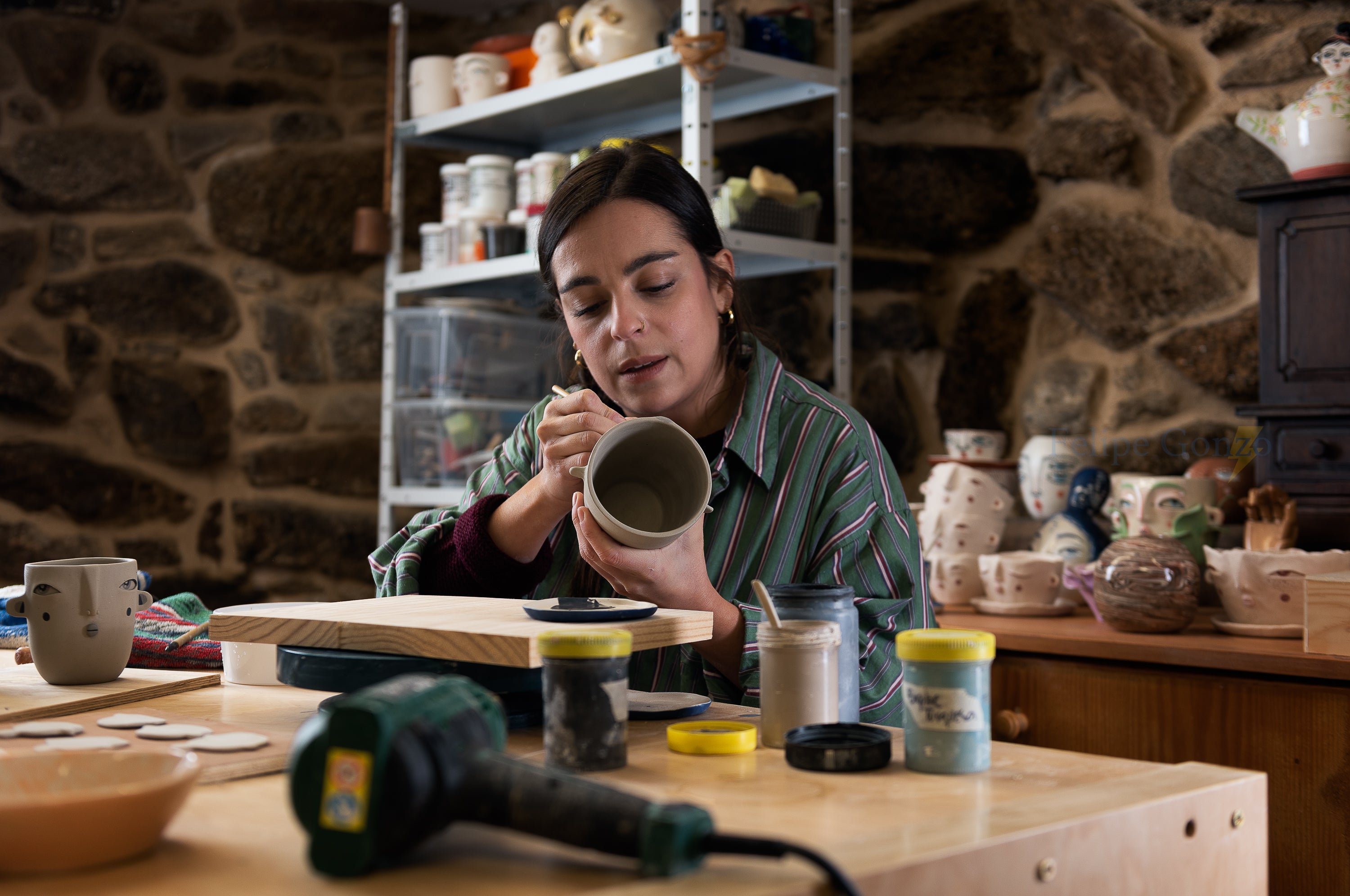
- With more than 24,000 Instagram followers, are social media essential in this profession?
- Social media can certainly help—they’re a great showcase where people can see your work and processes. But it can also be exhausting to keep up with that aspect, which is a job in itself.
I’m a workshop rat, and I often get so absorbed in my work that I forget to take photos or share updates. I suppose that’s a good thing—it means I’ve enjoyed the process without the stress of thinking about social media.
- If you had to pursue another artistic discipline, what would it be, and why?
- I’m really happy painting and making ceramics, but I’ve always wanted to learn glassblowing or work with fused glass. I’ve also been drawn to jewellery-making and have started training in that field.
- What’s ahead in the coming months?
- I’m starting my first collection of ceramic jewellery, which I’m really excited about. It’s a project I’ve been working on for months. The transition to such small-scale pieces is challenging, but I think it will be worth it.
I’m also preparing several personal projects and moving to a new studio—something that can only bring good things!
